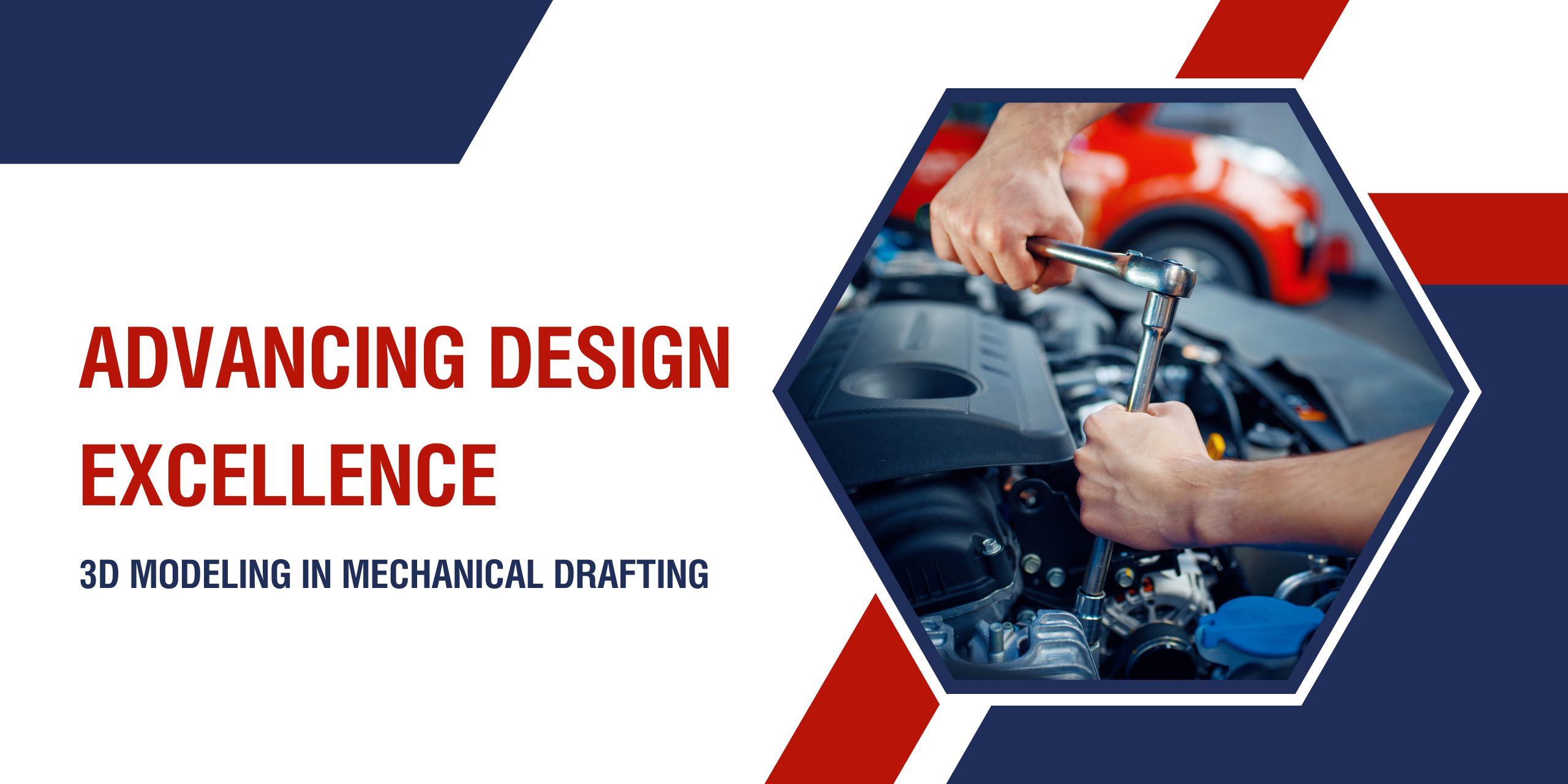In the world of engineering and manufacturing, precision is paramount. Accurate designs lay the foundation for successful products, machinery, and structures. The evolution of 3D modeling in mechanical drafting has revolutionized the industry by significantly enhancing precision and visualization, thereby streamlining the design process. In this blog post, we’ll delve into the benefits of 3D modeling in mechanical drafting and its profound impact on design accuracy, supported by industry statistics and facts.
-
Visualizing the Unseen:
Gone are the days of relying solely on 2D blueprints and imagination. With 3D modeling in mechanical drafting, designers can now visualize complex structures and components from all angles. This visual clarity eliminates ambiguity, reduces errors, and facilitates better communication between stakeholders. In fact, studies have shown that adopting 3D modeling has led to a substantial reduction in design errors, saving both time and resources during the manufacturing phase.
-
Iterative Refinement:
Mechanical drafting with 3D enables designers to create virtual prototypes effortlessly. This opens up the possibility of iterative refinement, allowing engineers to identify design flaws early in the process. As a result, the final product undergoes fewer changes during production, leading to faster time-to-market and cost savings. A survey conducted by a prominent engineering association revealed that over 70% of design teams reported improved product quality after integrating 3D modeling into their drafting process.
-
Enhanced Collaboration:
In the realm of mechanical drafting, collaboration is vital, involving multiple disciplines such as design, manufacturing, and testing. 3D modeling facilitates seamless collaboration between these departments, breaking down silos and promoting interdisciplinary understanding. By fostering a collaborative environment, projects are completed with greater efficiency and accuracy, as evidenced by a 30% reduction in rework rates among companies that have adopted 3D modeling for mechanical drafting.
-
Simulating Real-world Conditions:
Before the advent of 3D modeling, physical prototypes were often the only means to test designs under real-world conditions. This was not only time-consuming but also expensive. With 3D, simulations can be performed virtually, allowing designers to assess how the product will behave under various scenarios. This ability to simulate real-world conditions empowers engineers to optimize designs, leading to products that better meet performance requirements. According to an industry report, 3D has resulted in a 25% decrease in the number of physical prototypes needed for product validation.
-
Rapid Prototyping and Manufacturing:
The integration of 3D modeling in mechanical drafting has also facilitated the adoption of rapid prototyping and additive manufacturing technologies. 3D models can be directly used to create physical prototypes, expediting the development process. In fact, the additive manufacturing market is projected to witness a compound annual growth rate (CAGR) of over 20% in the next five years, largely attributed to the widespread use of 3D in the mechanical drafting industry.
In conclusion, 3D has ushered in a new era of precision and visualization in mechanical drafting. Its ability to provide a clearer visual understanding, enable iterative refinement, enhance collaboration, simulate real-world conditions, and accelerate prototyping and manufacturing processes has transformed the engineering landscape. As more companies embrace this technology, the impact on design accuracy and overall product quality continues to be remarkable. Embracing 3D is no longer an option but a necessity for engineering firms aiming to stay at the forefront of innovation and deliver excellence in their designs.


